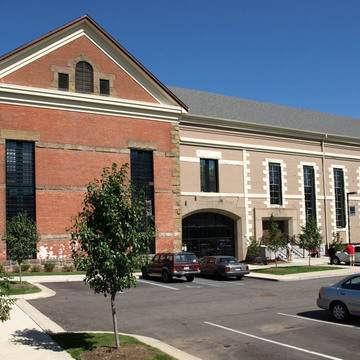On a thirty-five-acre site on the Grand River four blocks from the center of Jackson, an abandoned and blighted industrial complex and former prison were converted into a center for arts, culture, and creative industries that also includes housing and retail businesses after art space projects like the Torpedo Factory in Alexandria, Virginia. Armory Arts Village stands on the nineteen-acre site of the walled Jackson State Prison where inmates slept by night and workshops where they labored by day making binder twine, farm implements, furniture, and the like. The gable-roofed west cell block (1842) once held 328 tiny cast-iron cells. The stone walls and guard towers of the prison remain. The prison occupied the space until the 1920s and an armory since the 1930s. The Enterprise Group converted the former prison into a subsidized housing complex for artists with sixty-two loft apartments. Because of its “civic energy,” that is, its walkability, diversity, and offering of cultural and business opportunities, the project received funding through the governor's Cool Cities program. The city will link the project to its Grand River walk and downtown.
You are here
Jackson Armory Arts Village
1842–present; 2007–2008 adaptive reuse and rehabilitation, Elisabeth Knibbe of Quinn Evans. 100 Armory Ct., between 600 and 628 N. Mechanic St.
If SAH Archipedia has been useful to you, please consider supporting it.
SAH Archipedia tells the story of the United States through its buildings, landscapes, and cities. This freely available resource empowers the public with authoritative knowledge that deepens their understanding and appreciation of the built environment. But the Society of Architectural Historians, which created SAH Archipedia with University of Virginia Press, needs your support to maintain the high-caliber research, writing, photography, cartography, editing, design, and programming that make SAH Archipedia a trusted online resource available to all who value the history of place, heritage tourism, and learning.


